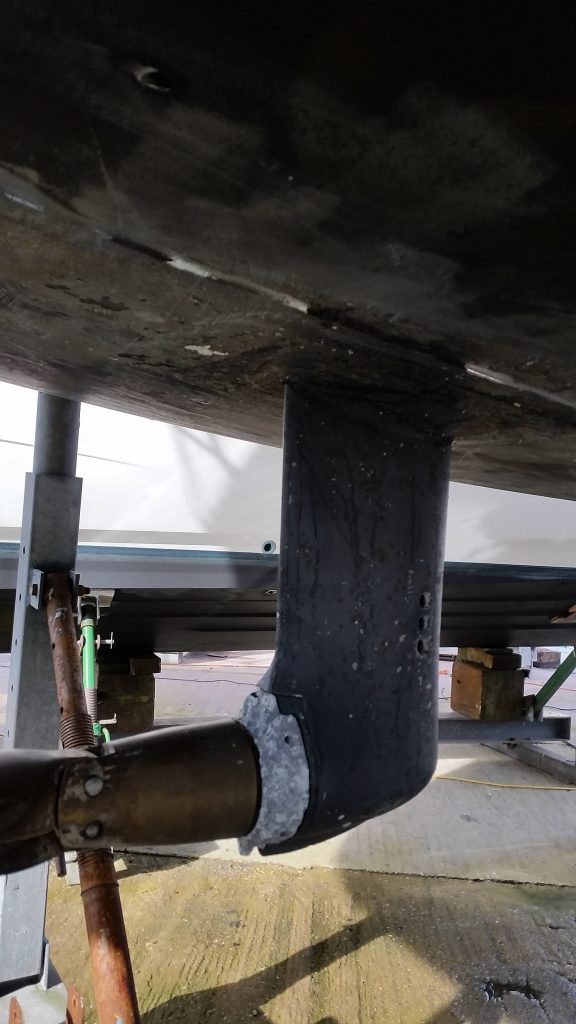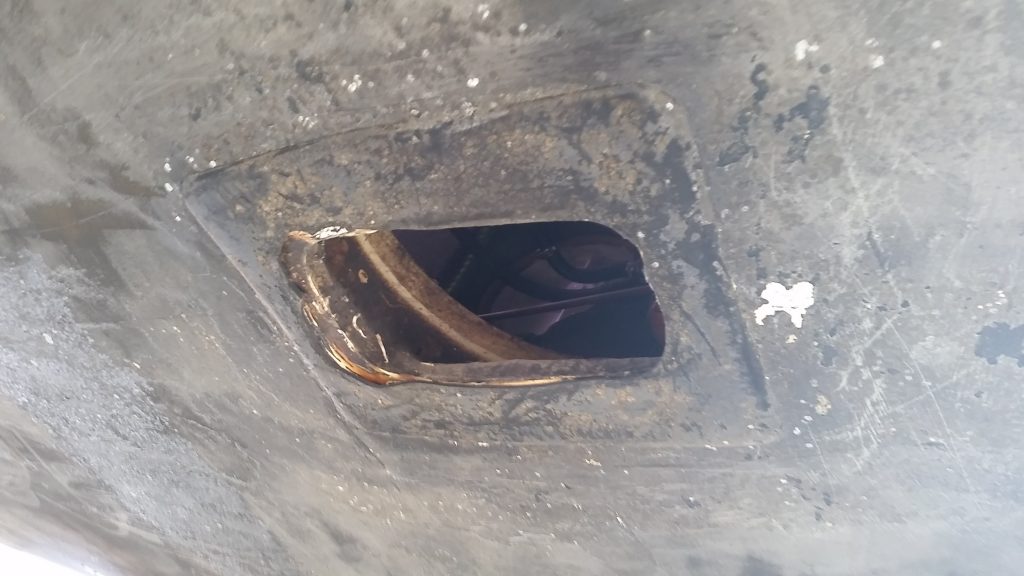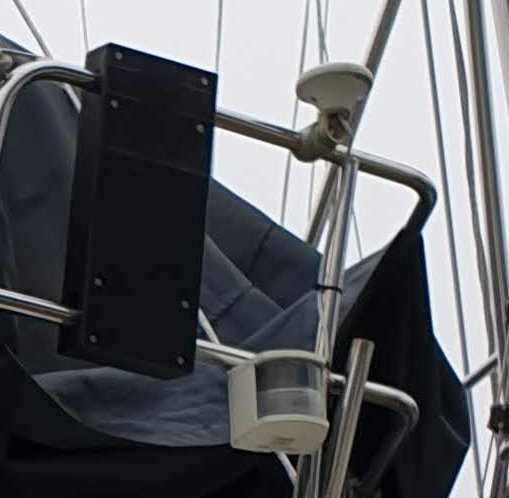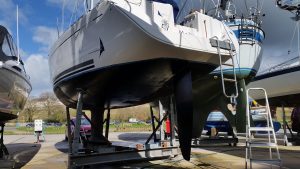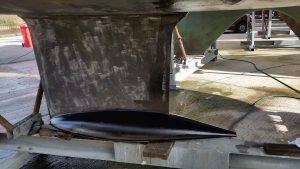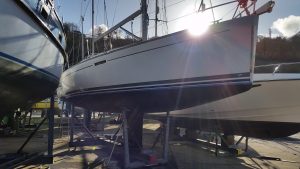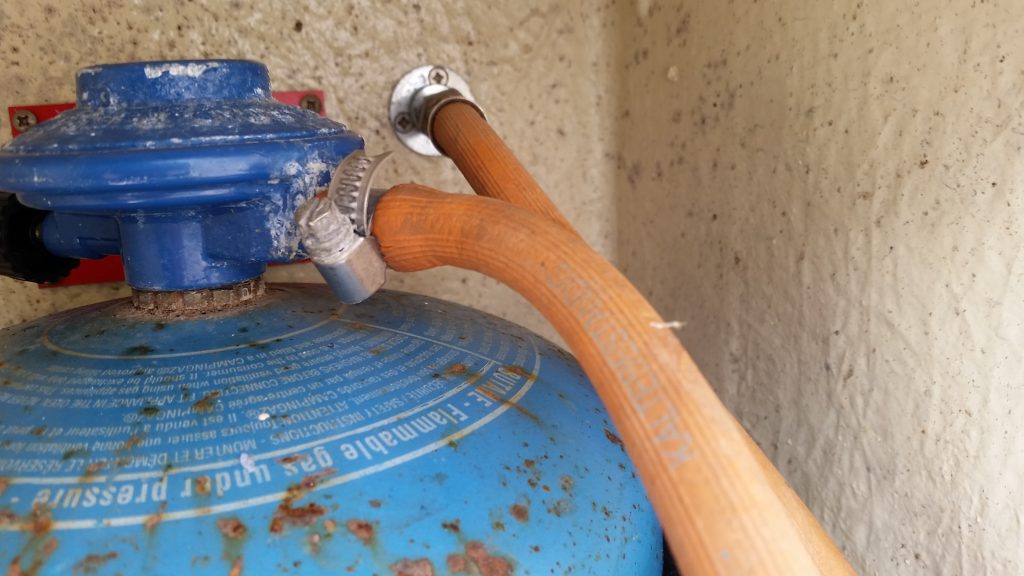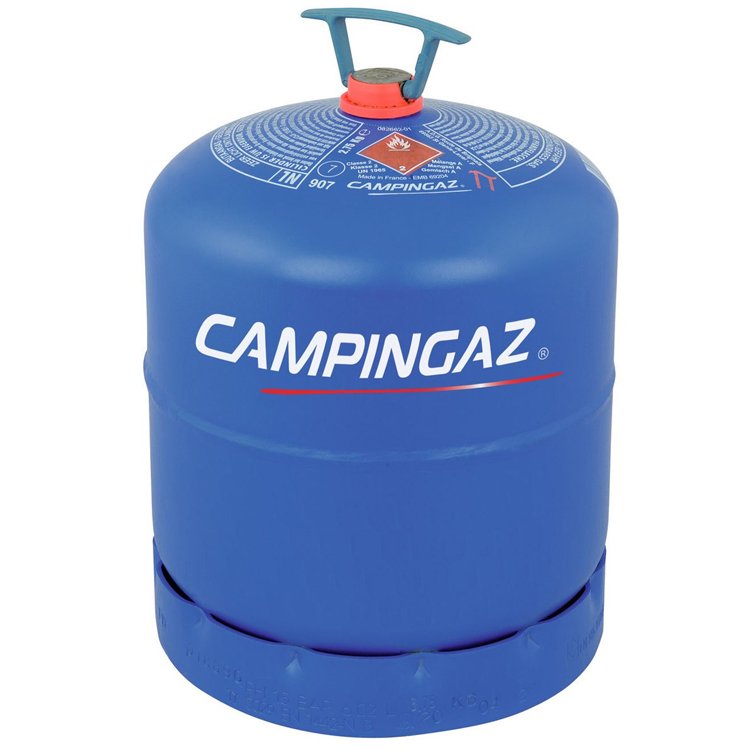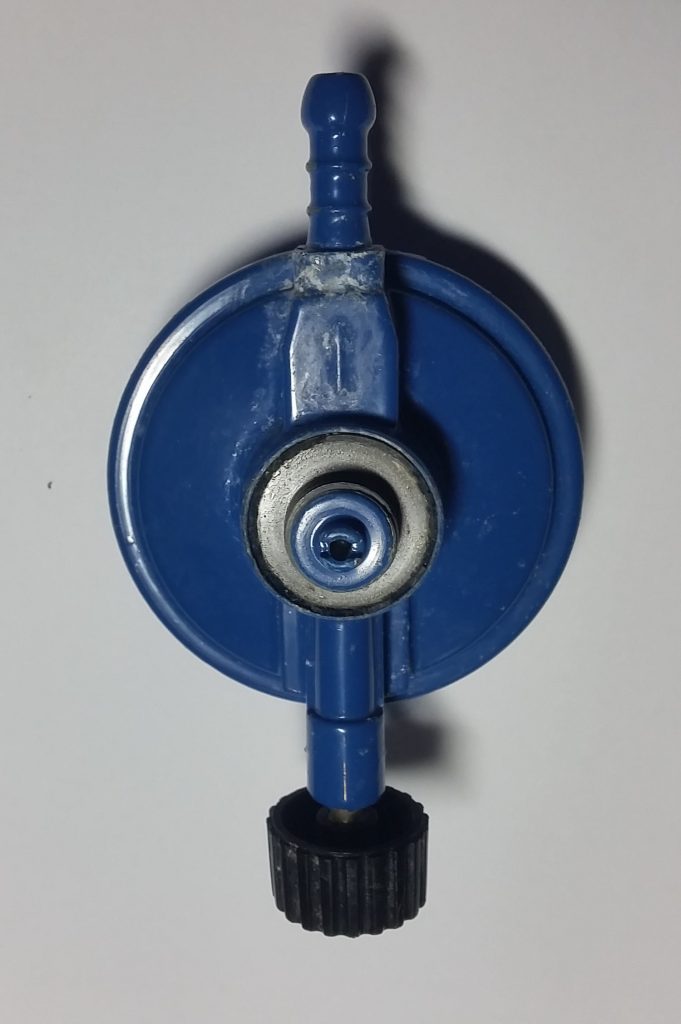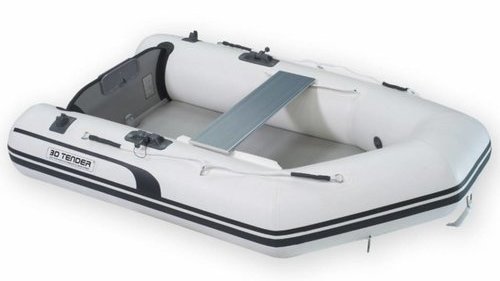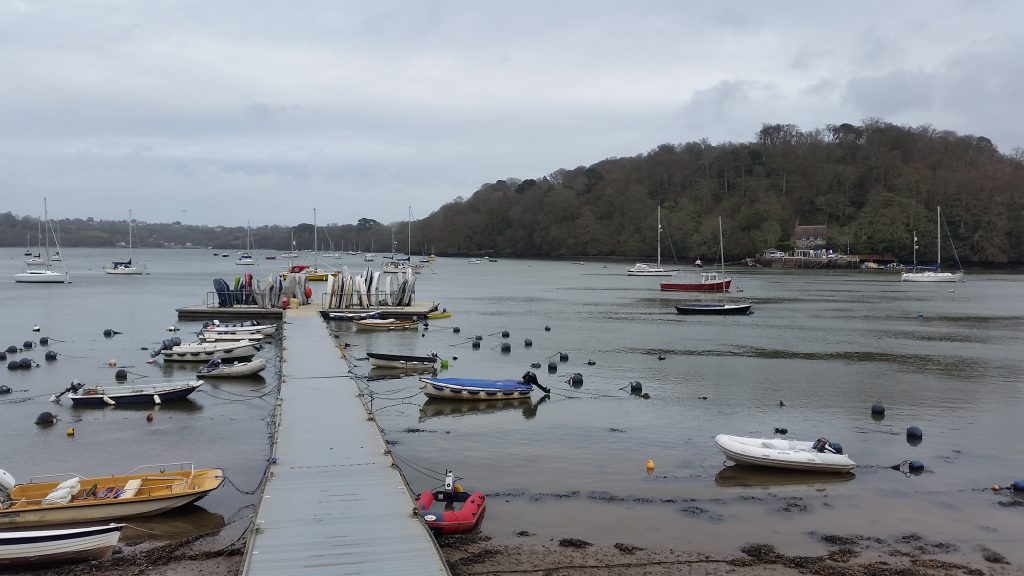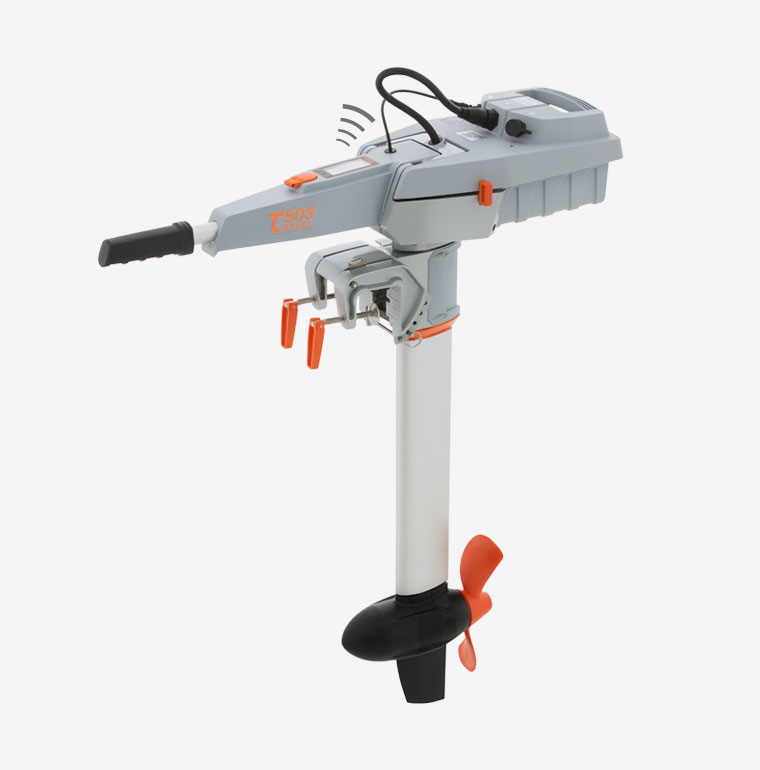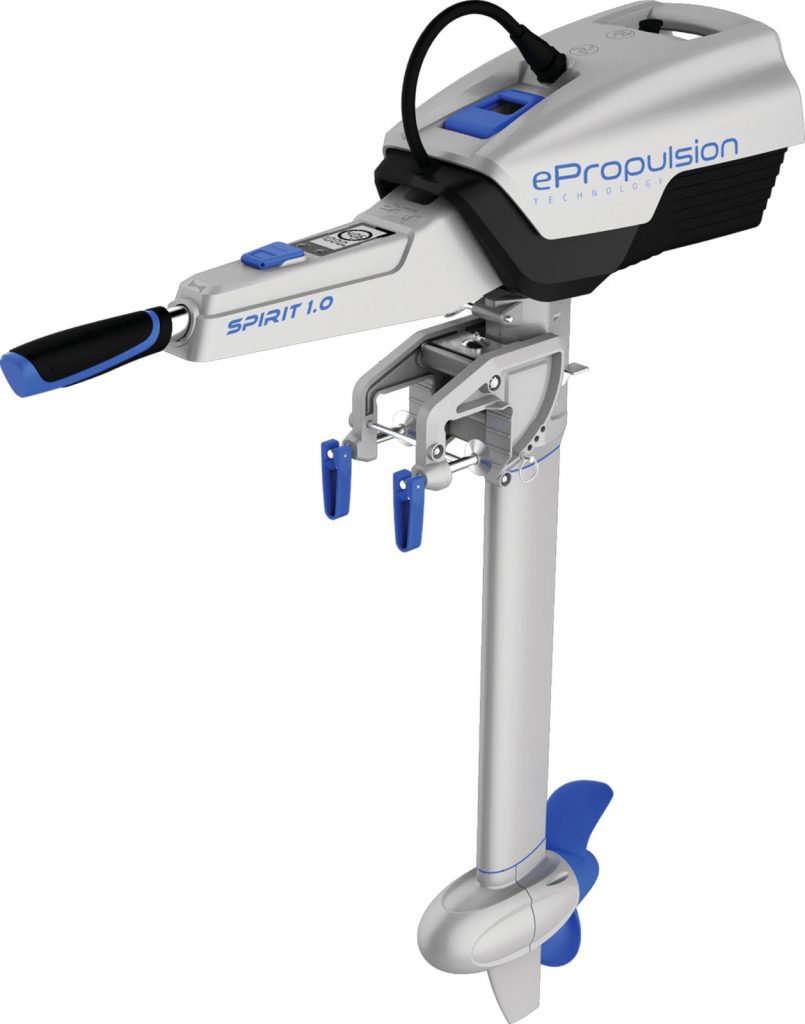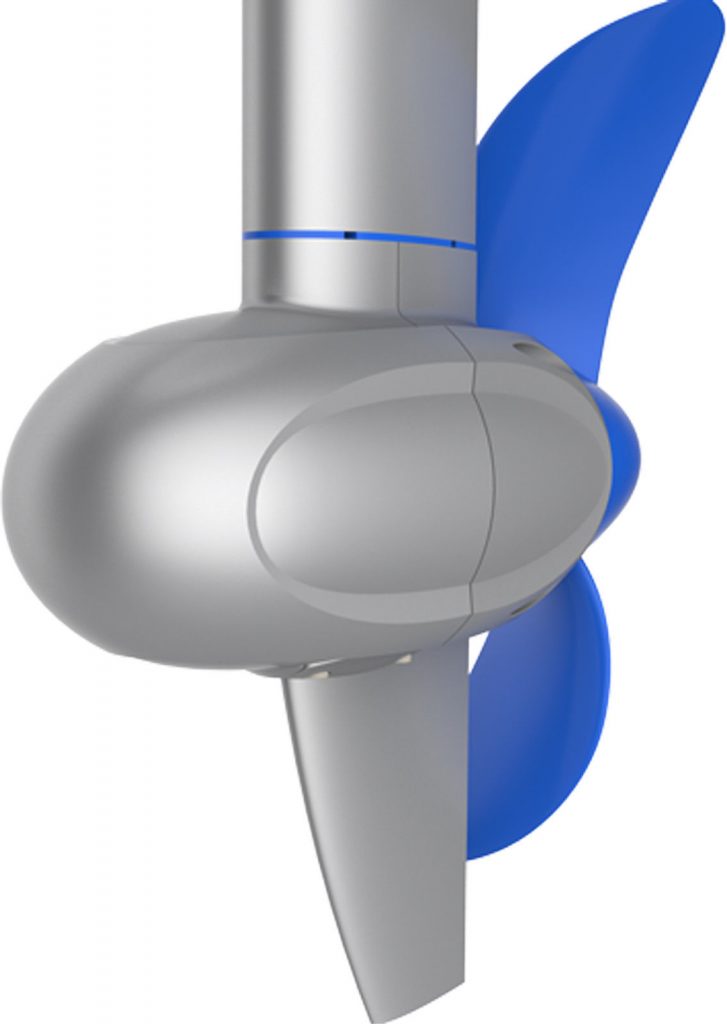We noticed in Penarth that our starboard navigation light was no longer working – luckily the following day’s sail was in the daylight back to Portishead.
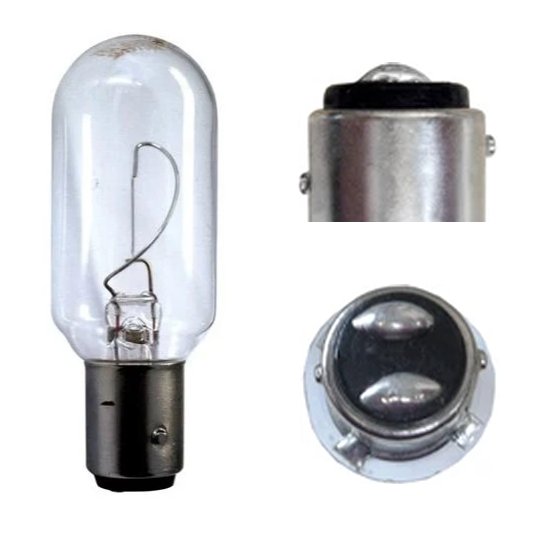
We have a spare white (incandescent) bulb, but I want the navigation lights to use LEDs as these should last longer and use less power.
Our lamps use the BAY15D lamp base which are 15mm diameter, with double contacts and offset bayonet pins.
But what power to order? The COLREGS (International Regulations for Preventing Collisions at Sea 1972) has a table showing the minimum visibility range for your navigation lights, depending on boat length. The RYA has a useful summary table on its Lights, Shapes and Sound Signals page. So we can calculate that we need a minimum of 1 mile visibility for Molia which is just a little over 10m long. Also, special advice for coloured LED lamps is:
‘Do not place cool white LED lamps behind coloured lenses as they do not produce the correct colours for navigation purposes.’
So we ordered specifically red, green and (cool) white LEDs to replace our 3 deck-level navigation light bulbs (port, starboard and stern). Product: BAY15D 24 SMD 2835 High Output Compact LED Navigation Light Bulb (+3 miles visibility).
Supplier: Boatlamps.co.uk have a really helpful website that shows you what LEDs are direct replacements for your old incandescent bulbs. The site includes full descriptions and dimensions so you can reliably confirm that your new LEDs are the correct size.

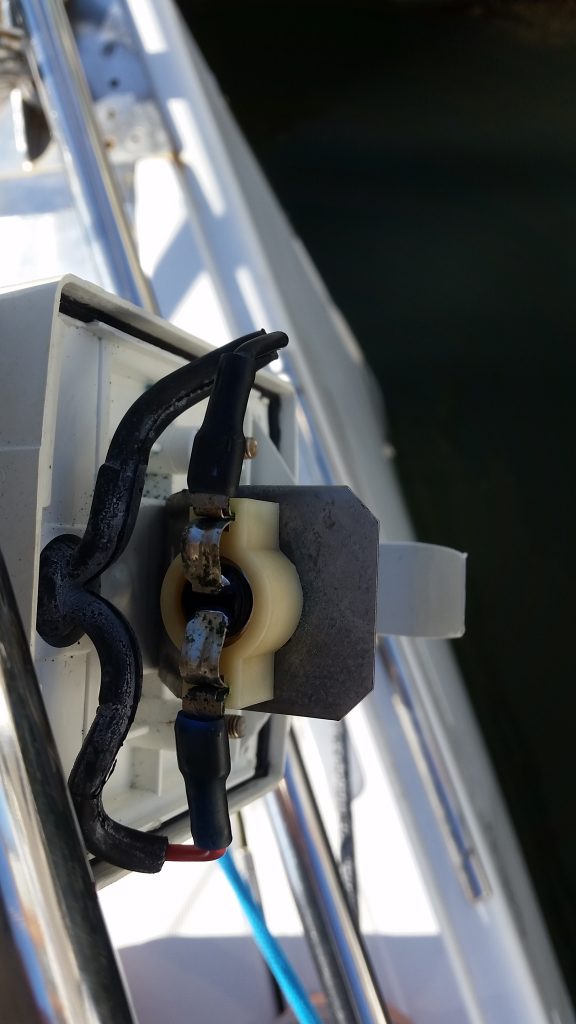
These pictures show the new LED fitted on the starboard side. We cleaned the contacts and also added the Contralube 770 type product to the contacts. This helps prevent corrosion and friction (vibration) damage of the contacts, so they should be more reliable in the long term.
We also took the opportunity to clean the rubber gaskets in our light enclosures, and lubricated them with some Vaseline to help keep them from hardening and cracking.


